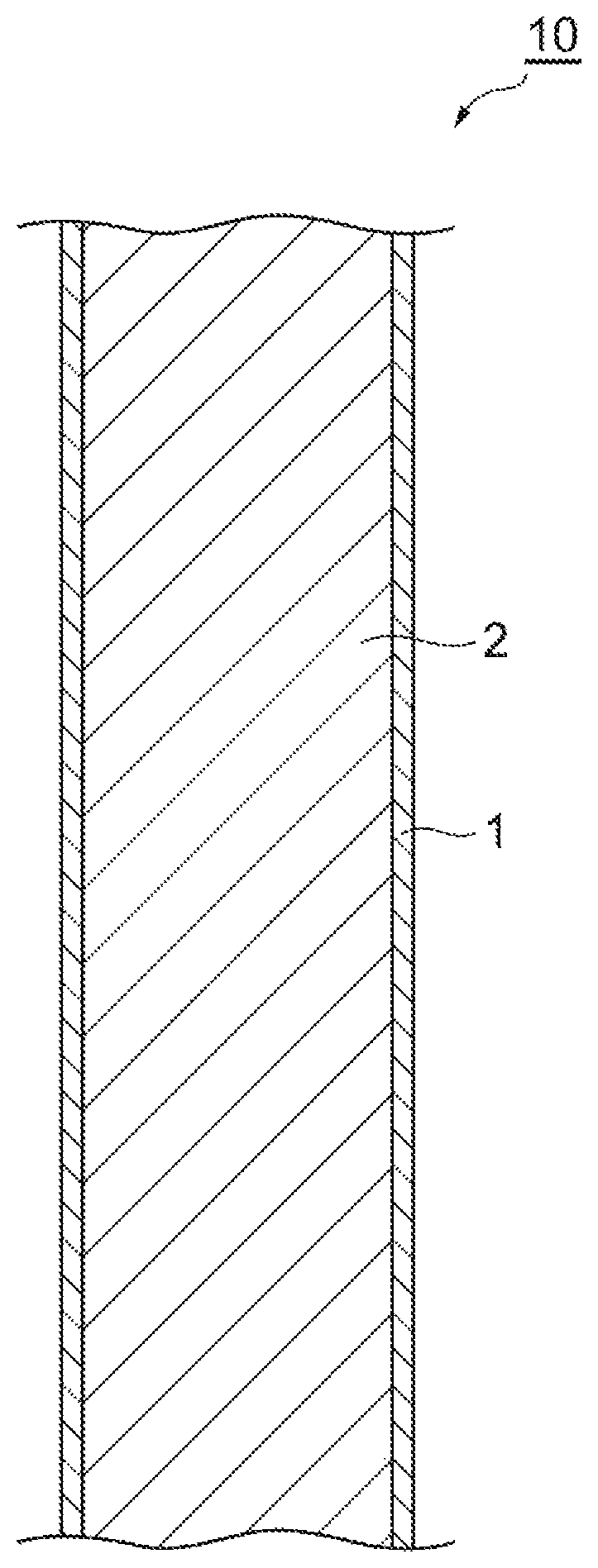Separation material
a technology of separation material and adsorption amount, applied in the field of separation material, can solve the problems of high pressure loss and insufficient mechanical strength, and achieve the effects of enhancing alkali resistance, pressure resistance and protein adsorption amount, and reducing non-specific adsorption
- Summary
- Abstract
- Description
- Claims
- Application Information
AI Technical Summary
Benefits of technology
Problems solved by technology
Method used
Image
Examples
example 1
[0115]
[0116]16 g of divinylbenzene (DVB960, manufactured by Nippon Steel & Sumikin Chemical Co., Ltd.) having a purity of 96%, 6 g of SPAN 80, and 0.64 g of benzoyl peroxide were introduced into a 500-mL three-necked flask, and an aqueous solution of polyvinyl alcohol (0.5% by mass) was prepared. This aqueous solution was emulsified by using a MICRO PROCESS SERVER, subsequently the emulsion liquid thus obtained was transferred into a flask, and the emulsion liquid was stirred for about 8 hours by using a stirrer, while being heated in a water bath at 80° C. The particles thus obtained were filtered, and then washed with acetone. Thus, porous polymer particles 1 were obtained. The particle size of the particles thus obtained was measured with a flow type particle size analyzer, and the average particle size and the C.V. value of the particle size were calculated. The results are presented in Table 1.
[0117]
[0118]4 g of sodium hydroxide and 0.4 g of glycidyl phenyl ether were added to ...
example 2
[0139]Porous polymer particles 2 were synthesized in the same manner as in the synthesis of the porous polymer particles 1, except that the amount of use of SPAN 80 was changed to 8 g. The porous polymer particles 2 thus obtained were treated by a method similar to that for the porous polymer particles 1, and thereby a separation material and a DEAE-modified separation material were obtained. The separation material and the DEAE-modified separation material were evaluated in the same manner as in Example 1.
example 3
[0140]Porous polymer particles 3 were synthesized in the same manner as in the synthesis of the porous polymer particles 1, except that the amount of use of SPAN 80 was changed to 9 g. The porous polymer particles 3 thus obtained were treated by a method similar to that for the porous polymer particles 1, and thereby a separation material and a DEAE-modified separation material were obtained. The separation material and the DEAE-modified separation material were evaluated in the same manner as in Example 1.
PUM
| Property | Measurement | Unit |
|---|---|---|
| porosity | aaaaa | aaaaa |
| specific surface area | aaaaa | aaaaa |
| pressure | aaaaa | aaaaa |
Abstract
Description
Claims
Application Information
 Login to View More
Login to View More - R&D
- Intellectual Property
- Life Sciences
- Materials
- Tech Scout
- Unparalleled Data Quality
- Higher Quality Content
- 60% Fewer Hallucinations
Browse by: Latest US Patents, China's latest patents, Technical Efficacy Thesaurus, Application Domain, Technology Topic, Popular Technical Reports.
© 2025 PatSnap. All rights reserved.Legal|Privacy policy|Modern Slavery Act Transparency Statement|Sitemap|About US| Contact US: help@patsnap.com

